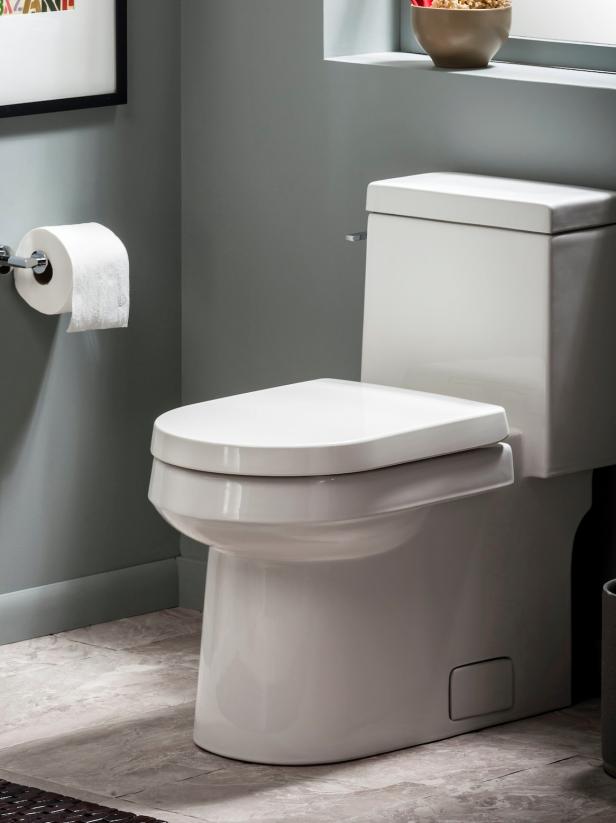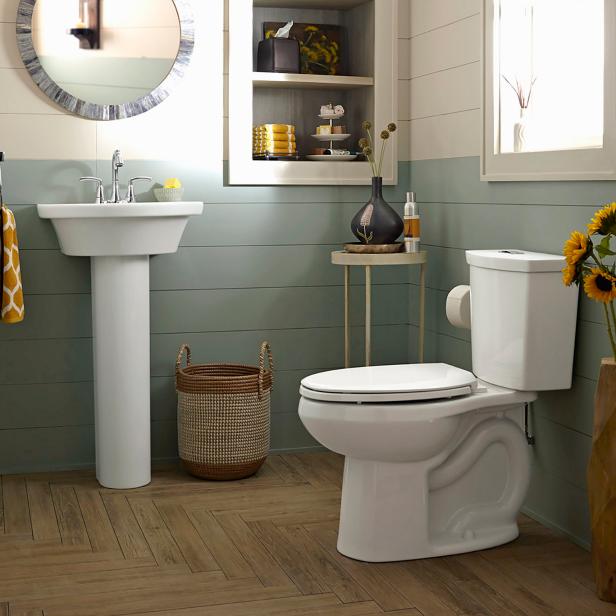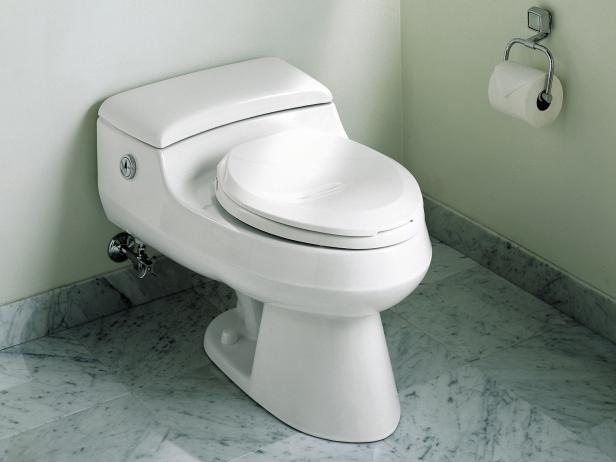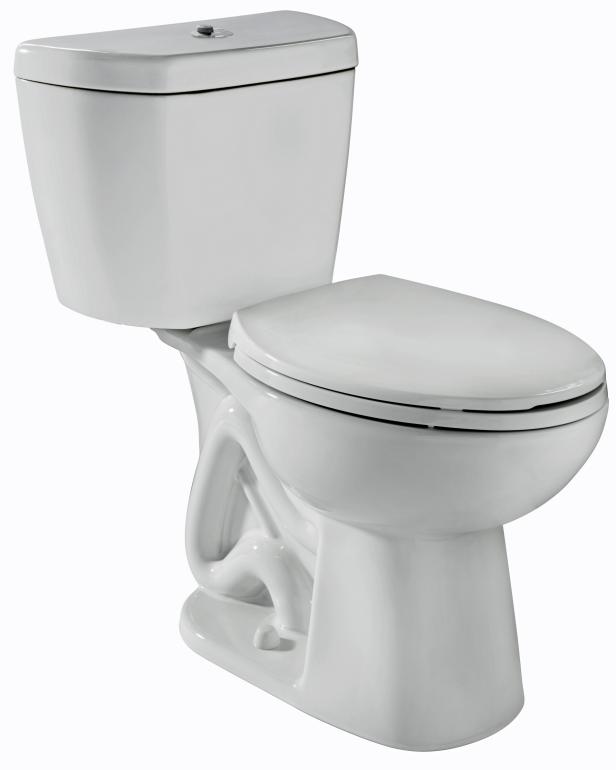Water-Saving Toilets That Won’t Flush Away Your Money
Save money and go easy on the environment, check out the last innovations in low-flow, dual-flush, pressure-assist and gravity-assist toilets.
If you’ve got a low-flow toilet, give yourself a pat on the backside. Toilet flushing is the largest indoor use of water in single-family homes, accounting for about 24 percent of all household water use, according to the American Water Works Association.

Frank Murray
But thanks in part to low-flow toilets, the overall consumption of water in the average single-family household is down almost 22 percent from 1994. That’s when the EPA decided to do away with water-guzzling toilets that sent about 3.5 gallons of water per flush down the drain, and mandated that all new toilets use only 1.6-gallons per flush.
The water-challenged states of California and Texas have gone even further, limiting toilet flushes to a mere 1.28 gallons per flush. The 1.28 gpf limit is now the standard for the current generation of “high-efficiency” (HET) toilets that earn WaterSense certification from the EPA.
Not to be outdone, ultra-high efficiency (UHET) toilets use a mere .8 to 1.1 gallons per flush.
Some municipalities and water providers offer rebates for HET and UHET toilets. You can check at the EPA website.
While the earliest examples of low-flow toilets had a difficult time removing all waste efficiently, today’s toilets use a variety of technologies and bowl configurations that help ensure powerful, clean flushes.
Nevertheless, not all flushes are created equal. You can check a prospective toilet’s efficiency by looking up its MaP score. MaP stands for Maximum Performance, an independent testing protocol that uses a mixture of soybean paste and toilet paper to simulate the real-world demands of toilet flushing.
The most efficient toilets completely remove 600 to 1,000 grams of waste in a single flush. Acceptable minimums are in the 250 to 350 gram range. The MaP searchable database includes over 3,800 toilet models.
If you’re ready to ditch your old pre-1994 toilet for a new low-flow model, here are the basic types:
Gravity-Assist Toilets
Thank you, Sir Isaac Newton. Gravity-assist toilets are some of the simplest, most common -- and least expensive -- of the low-flow options. Water flows down from a tank into the bowl to whisk away waste. Conventional gravity-assist toilets are also the easiest to fix, and repair parts can be found readily at home improvement centers and hardware stores.
You’ll find conventional gravity-assist toilets in a huge variety of styles, colors, and prices. Note that high prices aren’t always a guarantee of the best efficiency. Check reviews to find a good balance between cost, reliability, and efficiency.

Gerber
Dual-Flush Toilets
A subset of the gravity-assist toilet, dual-flush models have two flush buttons or a two-stage lever. One setting is a normal 1.6-gallon flush for solid waste, and the other is a lighter .8- to 1.1-gallon flush for liquid waste only.
High-efficiency dual-flush versions combine a 1.28 gallon flush for solid waste and a .8- to 1-gallon flush for liquid waste.
Two-stage flush system toilets use about 20 percent less water per year than conventional one-flush-only toilets, and many qualify for WaterSense certification. However, you’ll pay a slight premium. Dual-flush toilets cost 10 percent to 20 percent more than their conventional counterparts.

Kendall Photographs, American Standard
Pressure-Assisted Toilets
If you’re a more-horsepower-is-better type of person, a pressure-assisted toilet may give you the flush of your dreams. A P-A toilet has a sealed inner tank, usually made of plastic. As refill water enters this inner tank it compresses the air inside, creating pressure. A flush releases the water into the bowl with a forceful whoosh! P-A toilets are often found in commercial and institutional buildings, but they’re made for residential use, too.
P-A toilets do an excellent job of evacuating solid waste. As bonus, porcelain water tanks won’t sweat because the water is contained in the sealed inner tank. You can find P-A toilets in dual-flush models that are WaterSense certified.
On the downside, P-A toilets cost up to 30 percent more than conventional toilets, and the flush mechanism can be difficult to fix if repairs are needed. Also, that power flush can be noisy.

Kohler
Vacuum-Assisted Toilets
Vacuum-assisted toilets are similar to pressure-assisted models in that they both have an inner tank that prevents condensation on the outside of the porcelain tank. But where P-A toilets force waste out from above, V-A toilets suck waste out from below by creating a depressurization in the trapway (the exit point) at the bottom of the toilet. When flushed, this vacuum helps pull waste out of the bowl. V-A toilets are much quieter than pressure-assisted toilets.
V-A toilets are very efficient and some models use as little as .8 gallons for a full flush while still achieving high MaP scores. The technology is relatively new on the marketplace and many major manufacturers are just now adding these models to their lineups.

Niagara Conservation
Tank Inserts
Not ready to spend the cash on a water-saving toilet? Tank inserts can help you save water until you decide to upgrade. Made of non-corrosive, mold-resistant plastic, tank inserts hang inside the tank, taking up space so you use .5 to 1 gallon less water per flush.
Less water might mean a less-efficient flush, but for about $3, a tank insert might be worth a try until you’re ready to upgrade.




































